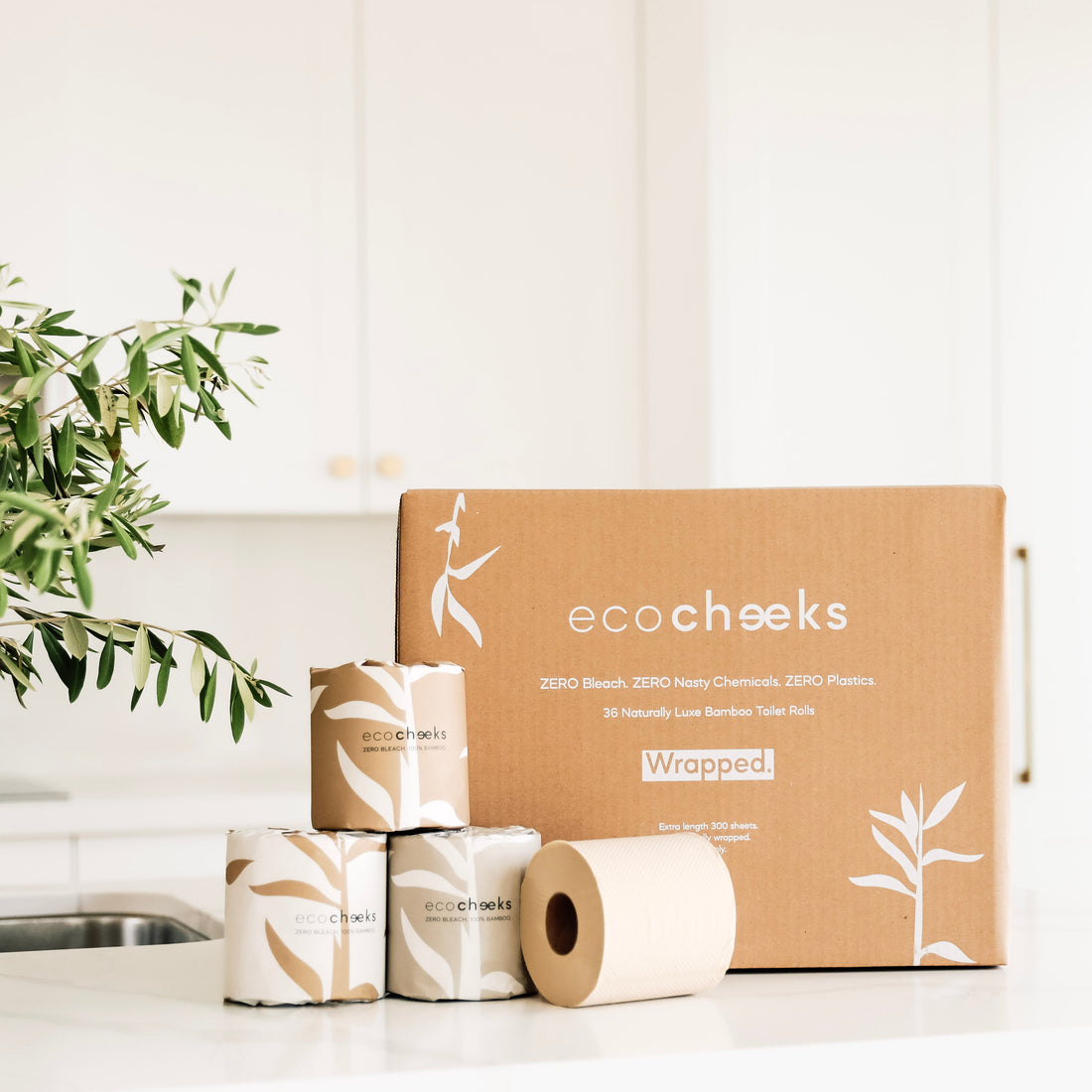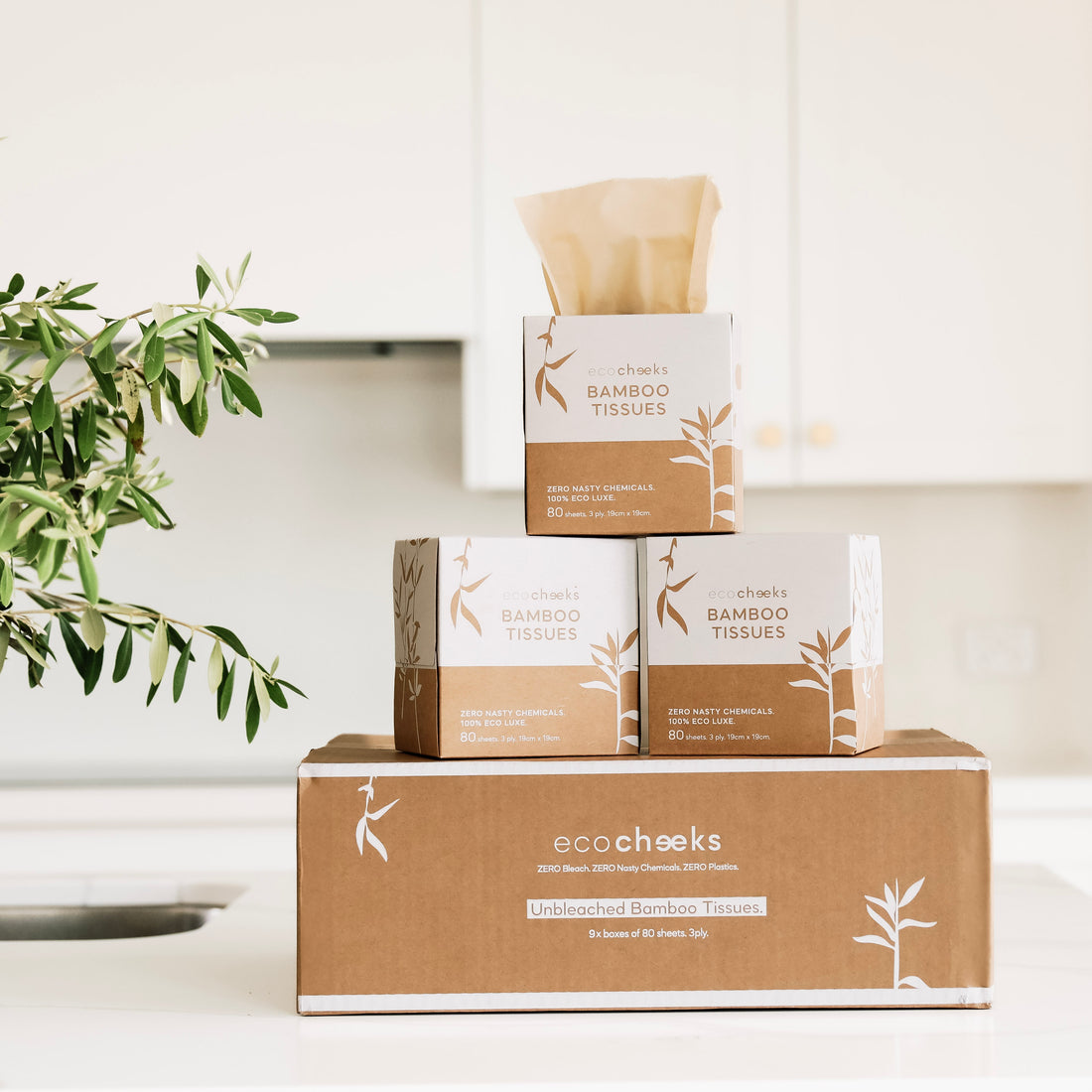Welcome back to our three-part series for Plastic Free July! In this second instalment, we're diving into advanced, next-level steps you can take to transform your kitchen into a plastic-free zone.

Let's take a moment to think about your kitchen setup. Are you finding it hard to contain all the plastic bags, containers, and wrappers, spilling over into your bin or recycling?
Here’s a fact: Only 9% of the world’s plastic actually gets recycled. And a staggering 90% of the ocean's surface debris is plastic. That's a hefty toll on marine life, from seals and dolphins to whales and turtles, all endangered by our discarded plastic waste. Yup, we’re responsible for that.
Now, take a closer look at your pantry, fridge, and cabinets. You might be surprised by the sheer amount of plastic food storage, kitchen accessories, and single-use plastics cluttering up your space. It's easy to forget just how much we rely on plastic and how it sticks around long after we've disposed of it.
The good news? You can easily swap or phase out these plastic items for more sustainable alternatives! If you're looking to make your kitchen more eco-friendly and reduce plastic waste, the plastic-free life in the kitchen tips below are a great place to start.
Ready to give your kitchen a makeover? Let's explore some easy yet impactful changes to promote sustainability and eco-friendliness. And while you're at it, don’t forget to check out our Instagram reel for some visual inspiration!
1. Advanced Bulk Buying and Storage Solutions: Bulk buying is a fantastic way to reduce plastic waste, but it requires a bit of planning and the right tools. Here are some strategies to elevate your bulk buying game to start a plastic-free life:
- Cloth Produce Bags: When heading to the store or farmers market, bring along cloth produce bags. They’re perfect for fruits, vegetables, nuts, and grains. Unlike plastic bags, cloth bags are breathable, keeping your produce fresh for longer. Plus, they’re washable and reusable, making them a sustainable choice.
-
Glass Containers: Ditch plastic containers in favour of glass ones. Glass is durable, doesn’t absorb odours or stains, and is perfect for storing bulk items. From mason jars to repurposed sauce jars, there are plenty of options to choose from. Label your jars for easy identification, and you’ll have a beautiful and organised pantry.

- Tips for Buying in Bulk:
- Plan Ahead: Make a shopping list and note the quantities you need to avoid overbuying.
- Reuse Containers: Take your own containers to bulk stores. Some stores allow you to weigh your containers before filling them.
-
Shop Locally: Support local farmers and markets. They often have bulk options with minimal packaging.
- DIY Bulk Storage Labels: Create your own labels to keep track of what’s in each jar. Use chalkboard labels and a white marker for a chic and reusable option. Not only does this keep your pantry organised, but it also adds a personal touch.
The one food that never goes bad is honey. Because of its high acidity and low water content, it presents a hostile environment to bacteria and other microbes. The most recent discovery was a honey jug that was thousands of years old and still tasted wonderful!
2. Homemade Plastic-Free Kitchen Essentials: Making your own pantry staples is a great way to start a plastic-free life and avoid plastic packaging and ensure you’re using fresh, high-quality ingredients. Here are some recipes and tips to get you started:
Homemade Nut Milk
Ingredients:
- 1 cup of raw nuts (almonds, cashews, or hazelnuts)
- 4 cups of water
- 1-2 dates for sweetness (optional)
- 1 teaspoon of vanilla extract (optional)
Instructions:
- Soak the nuts in water overnight.
- Drain and rinse the nuts.
- Blend the nuts with 4 cups of water until smooth.
- Strain the mixture through a nut milk bag or cheesecloth into a glass jar.
- Add dates and vanilla extract if desired, and blend again.
- Store in the refrigerator for up to 5 days.
Homemade Sauces and Condiments
Tomato Sauce
Ingredients:
- 2 pounds of tomatoes
- 1 onion, chopped
- 3 cloves of garlic, minced
- 2 tablespoons of olive oil
- Salt and pepper to taste
- Fresh basil leaves (optional)
Instructions:
- Blanch the tomatoes in boiling water for a minute, then transfer to ice water. Peel off the skins.
- Chop the tomatoes and set aside.
- In a pot, heat olive oil over medium heat. Add onions and garlic, sauté until translucent.
- Add the tomatoes, salt, and pepper. Simmer for 30 minutes, stirring occasionally.
- Blend the sauce if you prefer a smoother texture.
- Add fresh basil leaves for extra flavor.
- Store in glass jars in the refrigerator or freezer.
Mustard
Ingredients:
- 1/2 cup of mustard seeds
- 1/2 cup of apple cider vinegar
- 1/2 cup of water
- 1 teaspoon of salt
- 1 tablespoon of honey (optional)
Instructions:
- Soak the mustard seeds in vinegar and water for 2 days.
- Blend the mixture until smooth.
- Add salt and honey if desired.
- Store in a glass jar in the refrigerator.
Making these staples at home not only reduces plastic waste but also gives you control over the ingredients, ensuring healthier and tastier options.
Did you know?
Tomatoes Have Been to Space! As part of the "Tomatosphere I, II, III, and IV" studies, 600,000 tomato seeds were sent to the International Space Station and then grew in classrooms across Canada. The motivation behind these trials was the goal of learning more about how seed development and growth are affected by space travel.
3. Plastic-Free Food Storage Innovations: Storing food without plastic is easier than you might think. Here are some advanced solutions to keep your food fresh and have a healthy, plastic-free life:
-
Silicone Bags: Silicone bags are a versatile and durable alternative to plastic bags. They’re perfect for storing leftovers, packing snacks, and even sous-vide cooking. Look for brands that offer food-grade, BPA-free silicone bags. They’re easy to clean, reusable, and can handle extreme temperatures.

-
Beeswax Wraps: Beeswax wraps are a fantastic replacement for plastic wrap. Made from cotton fabric coated with beeswax, they’re flexible and can be moulded around bowls, fruits, vegetables, and more. To clean, simply wash with cold water and mild soap. They can last up to a year with proper care.
-
Glass Jars and Containers: Glass jars aren’t just for bulk buying; they’re also great for storing leftovers and prepped meals. They come in various sizes and can be used in the fridge, freezer, and even the oven. Plus, they look beautiful on your shelves!
-
Stainless Steel Containers: For on-the-go meals and snacks, stainless steel containers are a robust and sustainable choice. They’re leak-proof, durable, and keep your food fresh. Perfect for lunchboxes and picnics!
- Compostable Parchment Paper: When baking, opt for compostable parchment paper instead of traditional options. It works just as well and can be composted after use, reducing waste.
One of the earliest methods of food preservation is dehydration.
By taking away the moisture from food, dehydration prevents the growth of germs and other pathogens. Food was preserved by ancient cultures using techniques like smoking and sun-drying.
4. Sustainable Kitchenware: Elevate your kitchen with premium, plastic-free kitchenware. These items not only reduce plastic waste and plastic footprint but also add a touch of elegance to your cooking space:
-
Ceramic-Coated Cookware: Ceramic-coated cookware is a safe and eco-friendly alternative to non-stick pans that often contain harmful chemicals. They’re easy to clean, distribute heat evenly, and are perfect for everyday cooking.
- Stainless Steel or Bamboo Utensils: Swap out plastic utensils for stainless steel or bamboo ones. Stainless steel utensils are durable, heat-resistant, and dishwasher safe. Bamboo utensils are lightweight, biodegradable, and gentle on your cookware.
-
Wooden Cutting Boards: Wooden cutting boards are a must-have in any sustainable kitchen. They’re durable, naturally antibacterial, and can be easily maintained with regular oiling. Plus, they look great on your countertop!
-
Glass or Stainless Steel Straws: Say goodbye to single-use plastic straws and hello to reusable glass or stainless steel straws. They come with cleaning brushes and are perfect for smoothies, iced coffee, and more. Some even come in stylish cases for easy transport.

- Recycled or Upcycled Kitchen Tools: Look for kitchen tools made from recycled or upcycled materials. From mixing bowls to measuring cups, many brands are now offering eco-friendly options that reduce plastic waste and support sustainable practices.
Did you know?
The earliest known recipe for beer was recorded more than 4,000 years ago on a clay tablet in ancient Sumeria! Additionally, Marcus Gavius Apicius, a Roman gourmet, wrote the first cookbook that is known to exist, which was assembled in the first century AD.
Eco Cheeks Unbleached Bamboo Paper Towel
Eco Cheeks is committed to sustainability and offers unbleached bamboo tissue paper products that are safer and more environmentally friendly for your home and the environment. By avoiding dangerous chemicals present in plastic, these solutions guarantee a more healthful choice for regular kitchen use.
By adding Eco Cheeks' unbleached bamboo tissue paper products to your plastic-free kitchen supplies, you are adopting sustainability as a core value rather than just a change. It represents a critical step in fostering an environment-conscious home and making a lasting impression.
Ready to kickstart your journey to a plastic-free life in the kitchen? Let's take it one step at a time! Start by swapping just one plastic item with a sustainable alternative. Trust us, it's easier than you think! As you make these changes, you'll discover how practical and rewarding it is to live without plastic. Plus, you'll be doing your part for the environment and setting a great example for others!
Join us in taking action and being the change our planet urgently needs. Together, let's create ripples of change through each swap we make!
Stay tuned for the final part of our Next-Level Plastic-Free Living series, where we'll tackle the living spaces in your home. ✨
Does your kitchen have a plastic-free rule?
What difficulties did you face when you first started?
What is your go-to kitchen gadget made without plastic?
Share your thoughts, advice, and photos below! (comments section of this blog)








